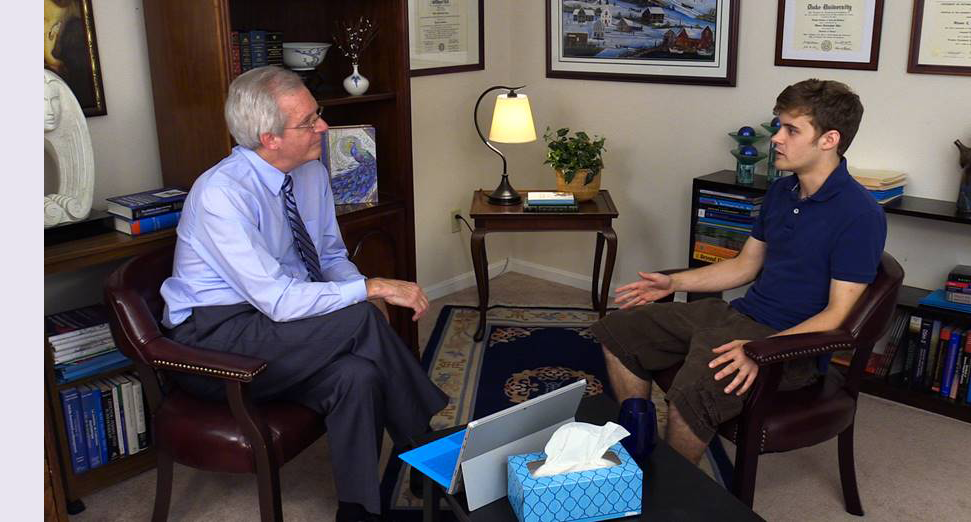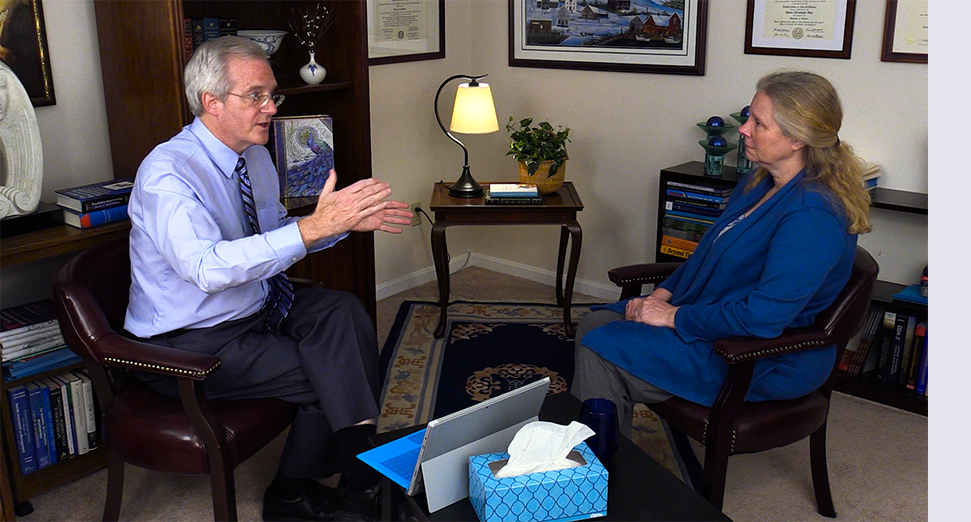 The CASE Approach - an evidence based intervention -
The CASE Approach - an evidence based intervention -
is listed on the federal Suicide Prevention Resource Center's "Best Practices Registry (BPR)" for recommended use across the United States
Description of the CASE Approach:
The CASE Approach is an easily learned interviewing strategy for uncovering suicidal ideation, planning, behaviors and intent. When using the CASE Approach, clinicians flexibly interweave innovative techniques from the field of clinical interviewing - known as Validity Techniques-  to decrease errors of omission, increase the client’s sense of safety when sharing suicidal thought, and to increase the validity of their self-reporting. These attributes allow the clinician to flexibly adapt their interviewing style to meet the unique needs of each client while sensitively uncovering a client’s potentially hidden method of choice for suicide (MOC), extent of actions taken using their MOC, and immediate intentions to use the MOC to proceed with suicide in clients at immediate risk (next 24 hours) or imminent risk (next 7 days).
to decrease errors of omission, increase the client’s sense of safety when sharing suicidal thought, and to increase the validity of their self-reporting. These attributes allow the clinician to flexibly adapt their interviewing style to meet the unique needs of each client while sensitively uncovering a client’s potentially hidden method of choice for suicide (MOC), extent of actions taken using their MOC, and immediate intentions to use the MOC to proceed with suicide in clients at immediate risk (next 24 hours) or imminent risk (next 7 days).
Unlike semi-structured formats clinicians never use cue sheets – or record information – while asking the questions used in the CASE Approach. This focused sensitivity upon the client allo ws clinicians to provide 100% of their attention to engaging the client and looking for nonverbal indicators of withheld secrets - secrets that can sometimes prove to be of life-saving importance. Both the evidence-based CASE Approach and the CASE Approach Online Courses are listed on the federal Suicide Prevention Resource Center’s Best Practices Registry (BPR) for recommended use across the Unites States.
ws clinicians to provide 100% of their attention to engaging the client and looking for nonverbal indicators of withheld secrets - secrets that can sometimes prove to be of life-saving importance. Both the evidence-based CASE Approach and the CASE Approach Online Courses are listed on the federal Suicide Prevention Resource Center’s Best Practices Registry (BPR) for recommended use across the Unites States.
Typical Course Video Sample
This course provides an excellent introduction to the use of the interviewing strategy for sensitively uncovering suicidal ideation, planning, behaviors, and intent - known in the clinical literature as the Chronological Assessment of Suicide Events (CASE Approach). In the course, a wide variety of learning approaches are creatively interwoven and integrated.
Dr. Shea first introduces each innovative interviewing technique and strategy of the CASE Approach via text (to maximize and rapidly consolidate initial learning) that is penned with the same informal, fast-paced, and highly enjoyable writing style so popular in Dr. Shea’s seven books. Throughout the course, a variety of compelling video approaches are utilized including video didactics provided by Dr. Shea, realistic, unscripted video demonstrations of Dr. Shea using the CASE Approach, and video annotation by Dr. Shea of the interview demonstrations.
As acclaimed suicidologist Jan Fawcett, MD, commented (a recipient of Lifetime Achievement Awards from both the American Association of Suicidology and of the American Foundation for Suicide Prevention):
“I have never seen such great teaching videos on eliciting suicidal ideation. They are a treasure, and I believe that many lives will be saved by those lucky enough to view them.”
This is a view echoed by Jonathan Singer, PhD (Co-author, Suicide in Schools: A Practitioner's Guide to Multi-level Prevention, Assessment, Intervention, and Postvention):
“The accompanying videos are the most amazing teaching videos I’ve ever seen - they include mini-lectures and wondrously realistic role-plays (which invite you into the mind of a master) and speak directly to the content in the text.”
Finally, particular attention was paid to the creation of the annotated answers to the questions appearing at the end of each of the nine modules. The annotated answers actively engage the student in the learning process, both consolidating the previously learned material while adroitly introducing new material not previously discussed.
Please note that this course does not provide CEs or CMEs.
Students do receive a certificate of completion from TISA
indicating a course completion time of 4 hours.
FAQs
-
Can the CASE Approach be used in teletherapy?
Absolutely. It is perfectly designed for teletherapy, meeting a great need in the aftermath of the COVID-19 pandemic. Indeed, it is also very effective for telephone interventions as is often seen with suicide prevention crisis lines.
-
Our organization is implementing a Zero Suicide Approach. Will training in the CASE Approach meet our needs?
The CASE Approach resonates nicely with the Zero Suicide Initiative as reflected by various trainings on the CASE Approach - provided by Dr. Shea - having been listed on the Zero Suicide’s Care Training Options List for years.
-
Does this course provide CEs or CMEs?
As noted above, this course does not provide CEs or CMEs. Students do receive a certificate of completion from TISA indicating a course completion time of 4 hours.
-
For what age groups is the CASE Approach designed?
The CASE Approach is specifically designed for use with adolescents and adults of all ages. It is not designed nor recommended for use with children.
On the other hand, the validity techniques utilized in the CASE Approach (as are well-described in both courses) are excellent for use with the parents of children to uncover secrets such as child abuse and neglect, problematic alcohol and/or substance use, or other parental behaviors that can damage children or thwart therapy.
-
In what clinical settings is the CASE Approach of use?
The CASE Approach is used in essentially all clinical settings including community mental health centers, inpatient units, university counseling centers, high schools, private practices, correctional facilities, military bases and VAs, Native American counseling centers, emergency departments, telephone crisis centers, and primary care clinics and general hospitals.
-
Can the CASE Approach be used in differing cultures and populations?
The CASE Approach has been used across numerous cultures, ethnic groups, races, and sexes including populations - such as the LGBTQI community - that cross all ethnicities and races.
If you are in crisis, you can find help at the
Lifeline Chat Room 988lifeline.org or call or text 988.


